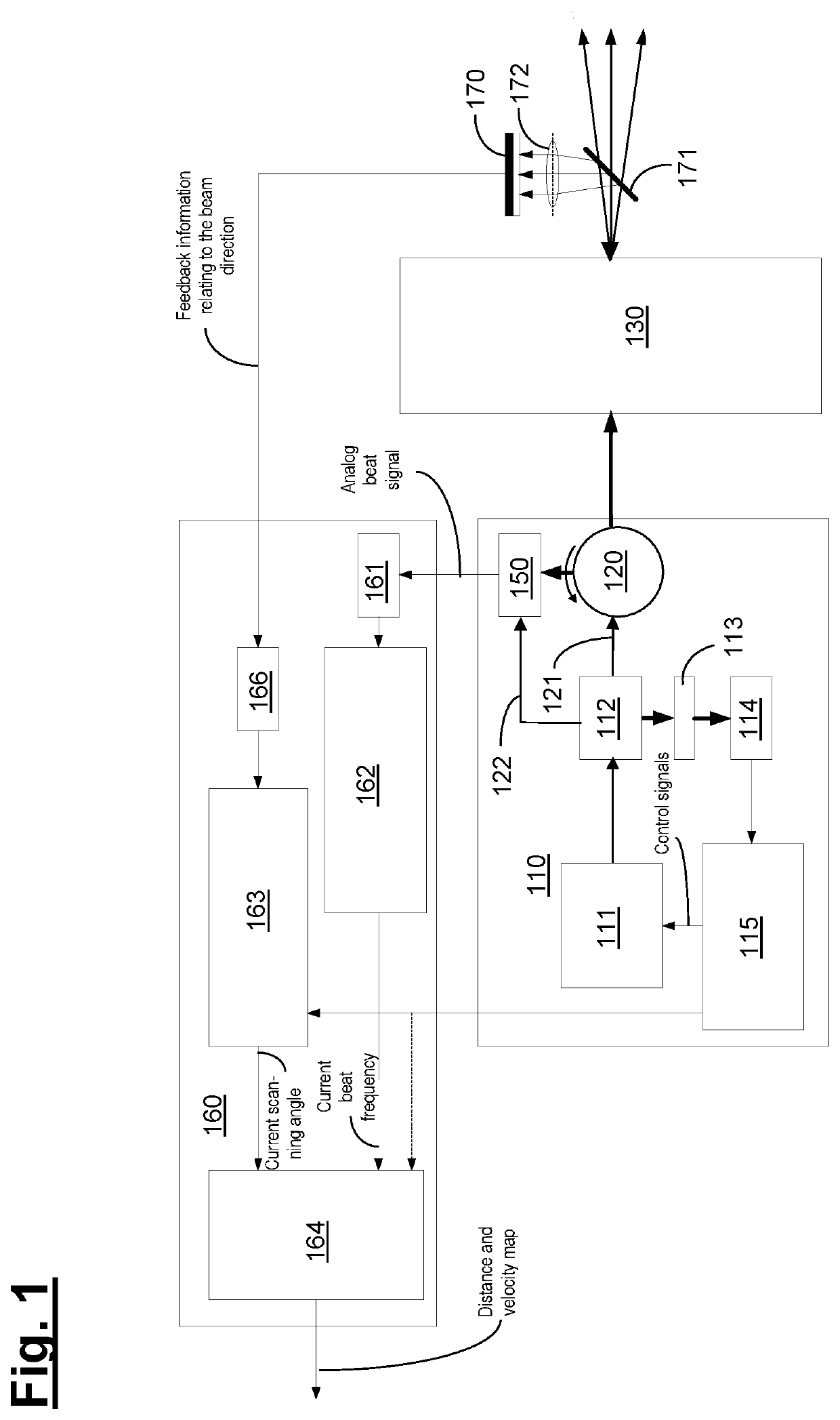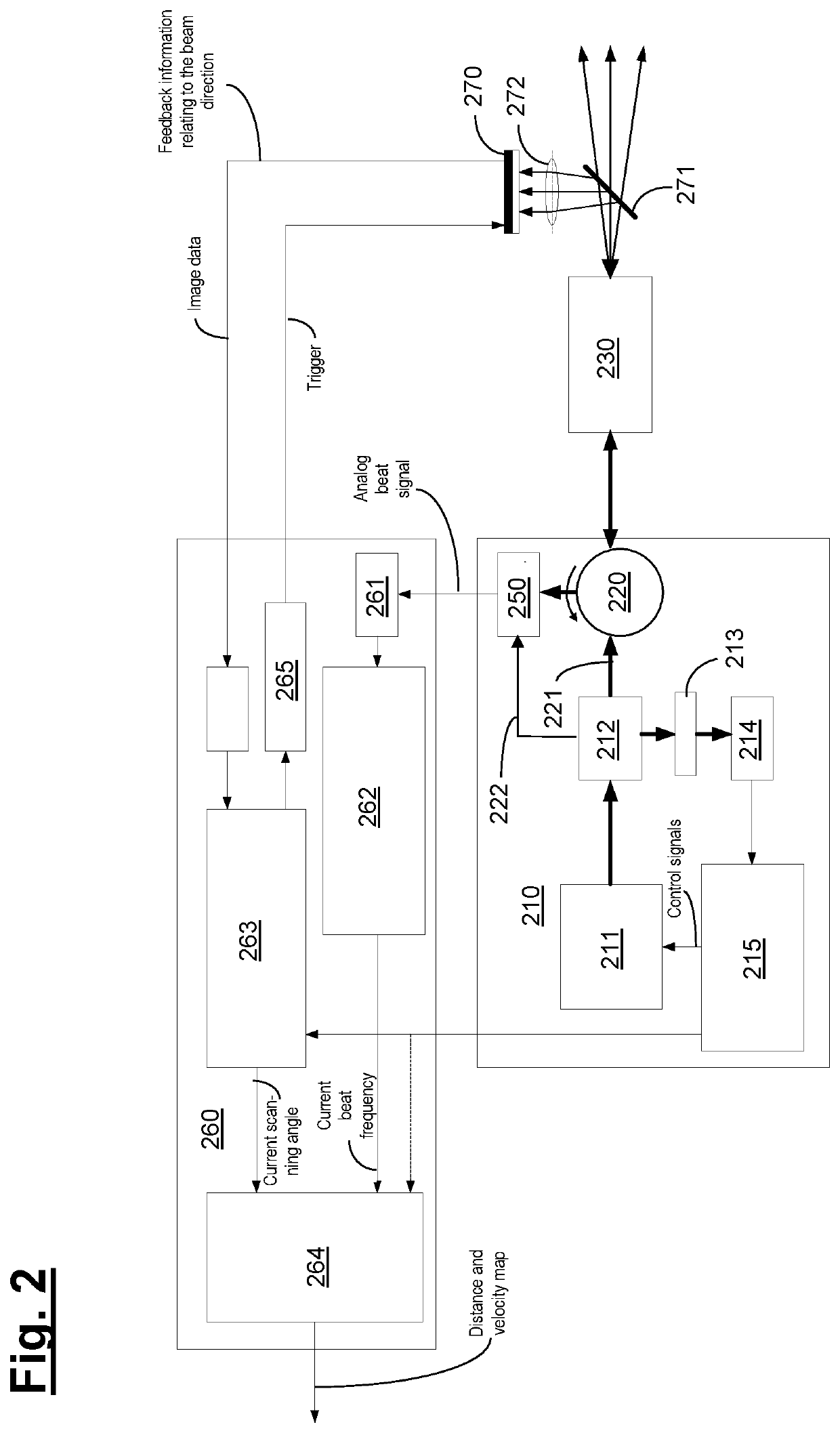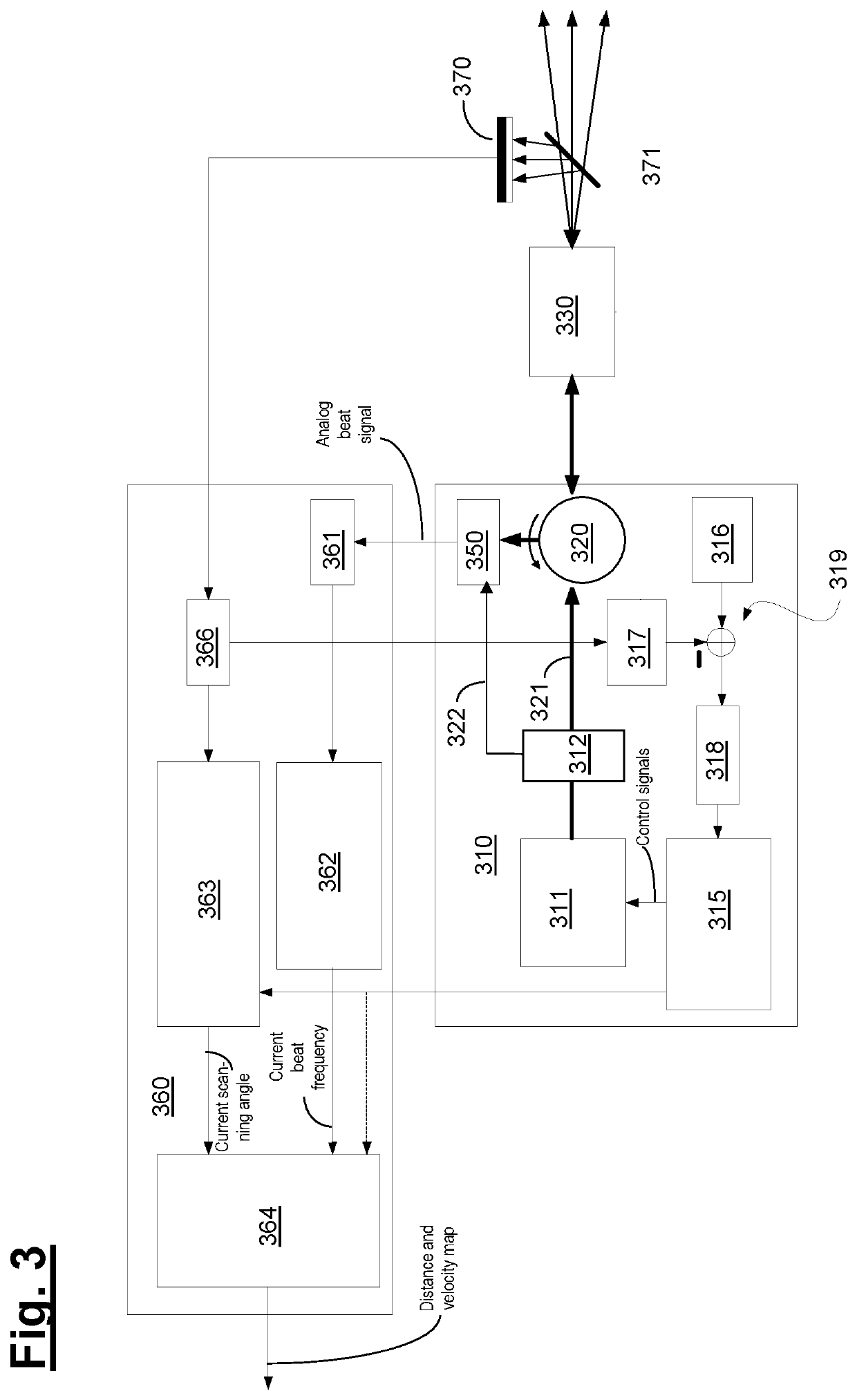Apparatus and method for ascertaining a distance to an object
a distance measurement and distance technology, applied in the field of apparatus and distance measurement method, can solve the problems of inaccurate image reconstruction, increased complexity of structure, increased cost, etc., and achieve the effect of facilitating distance measuremen
- Summary
- Abstract
- Description
- Claims
- Application Information
AI Technical Summary
Benefits of technology
Problems solved by technology
Method used
Image
Examples
Embodiment Construction
[0049]Below, the structure and functionality of embodiments of an apparatus according to the invention are described with reference to the schematic illustrations of FIGS. 1-5.
[0050]According to FIG. 1, the light source unit 110 comprises a frequency-modulated FMCW laser 111 (FMCW=frequency-modulated continuous wave) for emitting an optical signal with a time-varying frequency (“chirp”). By way of example, the laser 111 could be a DFB laser, a WGMR laser or else a VCSEL laser.
[0051]The light source unit 110 generates optical signals that each have a time-varying frequency according to a specified (in particular linear) frequency curve. To this end, the light source unit 110 comprises—purely in exemplary fashion and without restricting the invention thereto—a beam splitter 112, a Mach-Zehnder interferometer 113 serving as a frequency discriminator and a detector 114, with the possibly amplified output signal of the detector 114 forming the input for a control device 115, which can co...
PUM
 Login to View More
Login to View More Abstract
Description
Claims
Application Information
 Login to View More
Login to View More - R&D
- Intellectual Property
- Life Sciences
- Materials
- Tech Scout
- Unparalleled Data Quality
- Higher Quality Content
- 60% Fewer Hallucinations
Browse by: Latest US Patents, China's latest patents, Technical Efficacy Thesaurus, Application Domain, Technology Topic, Popular Technical Reports.
© 2025 PatSnap. All rights reserved.Legal|Privacy policy|Modern Slavery Act Transparency Statement|Sitemap|About US| Contact US: help@patsnap.com



